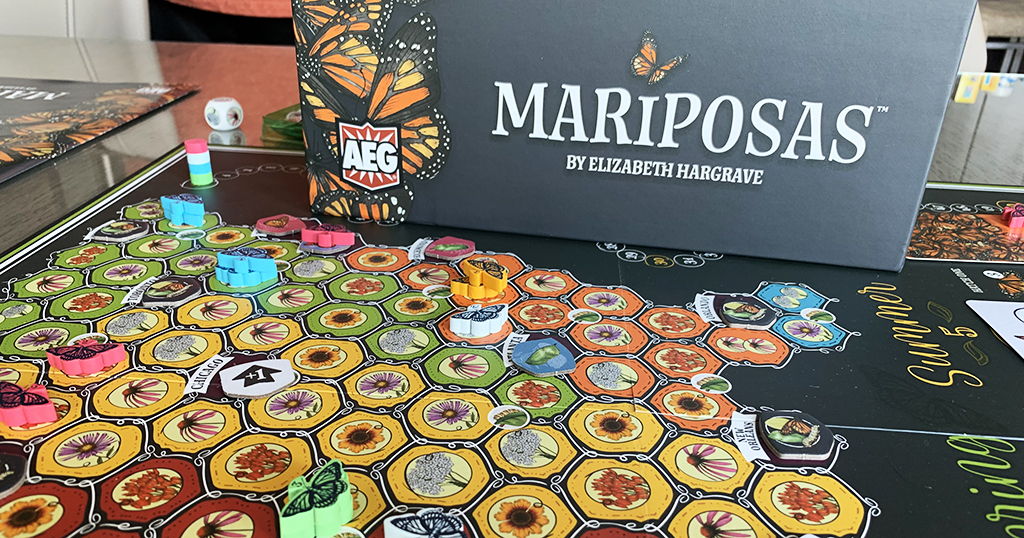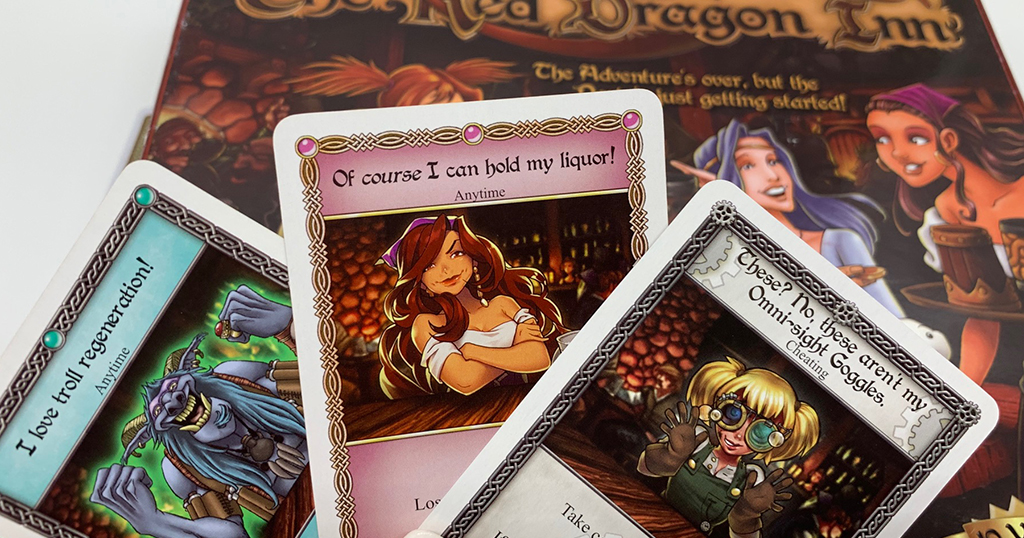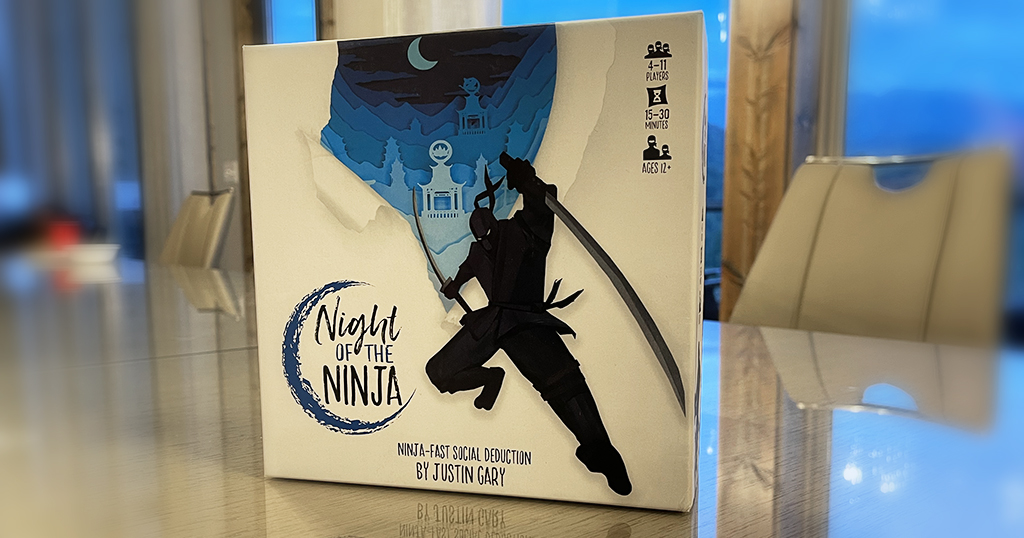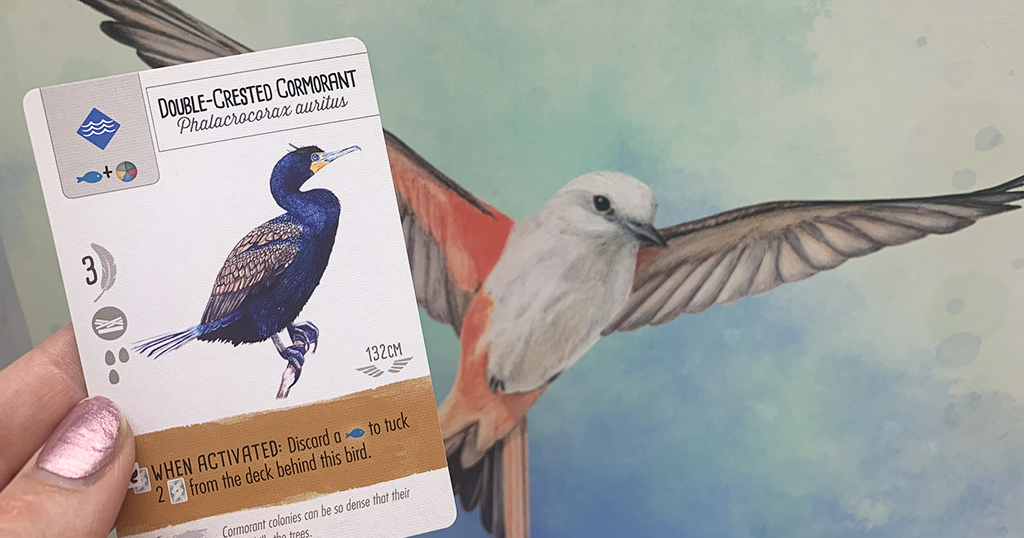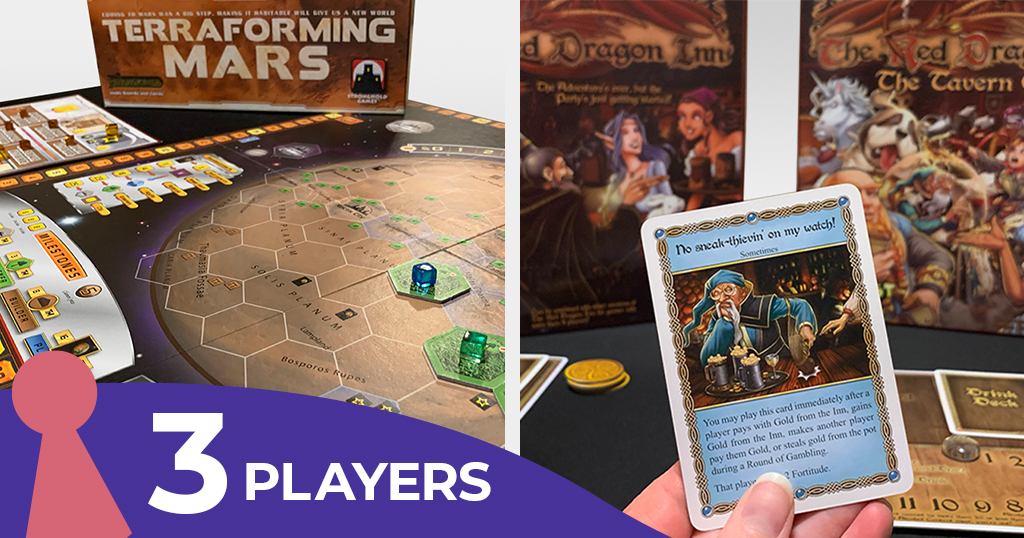I was always told that if I liked Wingspan, I would love Mariposas.
So, I finally had the opportunity to play recently, and I will say that I did quite enjoy it. Did I love it as much as Wingspan? The jury is still out.
But it’s hard not to love Mariposas simply because it is so beautiful.
The board game is a game of movement from Elizabeth Hargrave, the game designer who is known for Wingspan and also Tussie-Mussie.
The Mariposas board game was inspired by the monarch butterflies that leave Mexico and spread out across eastern North America. Every fall, millions fly back, but no butterfly makes the round trip.
Hargrave designs games that are inspired by her love of nature, and as you may have guessed, this one and follows the unique migration pattern of monarch butterflies.
If you’re thinking about adding the Mariposas board game to your game collection, here’s everything you need to know about it, including my honest review and a quick guide on how to play, plus a few bonus strategy tips.
Read Also: Date night games for married couples: Best ideas for 2022

Game overview
This is a unique butterfly migration game that takes place in three seasons: spring, summer and fall.
You start out with generation 1 butterflies that will head north in the spring, spread out in the summer and return south in the last season.
In short, the player who has earned the most victory points along the way wins.
Is Mariposas a good game?
I enjoyed playing it and so did my sister. My husband wasn’t as much of a fan but he feels sometimes these games are based on luck of the draw. As in, you do better if you draw better action cards.
However, I think there’s quite a bit of strategy involved.
Overall, it’s a gorgeous game and it’s relaxing to play on a lazy afternoon. It could be a gateway game for players who are new to gaming and do not look for anything overly complicated.
My only complaint is that it is not entirely interactive with other players, but that is also the case with Wingspan. So, if you have a larger group, some players start to lose interest between turns.

Game setup
There are a lot of steps to set up the game in the rulebook, but don’t get too discouraged. It’s not as bad as it looks.
Of course, start by placing the board in the center of the table. Place three goal cards facedown on the map area below each season (spring, summer, fall). Make sure they match by color.
The spring card will be face up.
Then, shuffle and set out the action cards in a facedown deck and set out the flower tokens where everyone can reach them.
Deal each player a hand of two action cards. Place the point tokens at the starting point of the score track.
Set a waystation token on each city randomly, face down. Then, place life cycle cards on the waystation board in their respective locations.
Finally, randomly place ability tokens faceup to the right of each set on the waystation board. Ability tokens are the benefits that correspond with the life cycle cards.
For the butterfly set up, each player will have one first-generation butterfly in Michoacán.
Then, there will be (1) generation 2 butterfly for each player on summer and (2) generation 3 butterflies for each player on fall, as pictured above.

How do you play Mariposas?
To take a turn, play one card from your hand face-up in front of you and follow the action. Collect any resources that you have gained on your landing spot.
Each time you land, you gain a resource.
You can reproduce if you land next to a milkweed symbol.
When you are done with the action card, it stays in front of you until the season changes.
Movement and landing
The action cards will have little butterflies with arrows that will indicate how many spaces you can move.
The number of butterflies on the card indicates how many butterflies you can move. The arrows indicate how many spaces you can move.
Usually, you can move between 1-3 butterflies about 3-6 spaces. Some movement cards let you reuse a previous action. Each time the butterfly lands, you can gain a flower token.
You will need these to hatch more butterflies.
Some movement cards allow you to take the token of an adjacent space. This is marked by an icon on the action card.
Note: If you have two of the same action card, you can trade in one or both for a replacement.
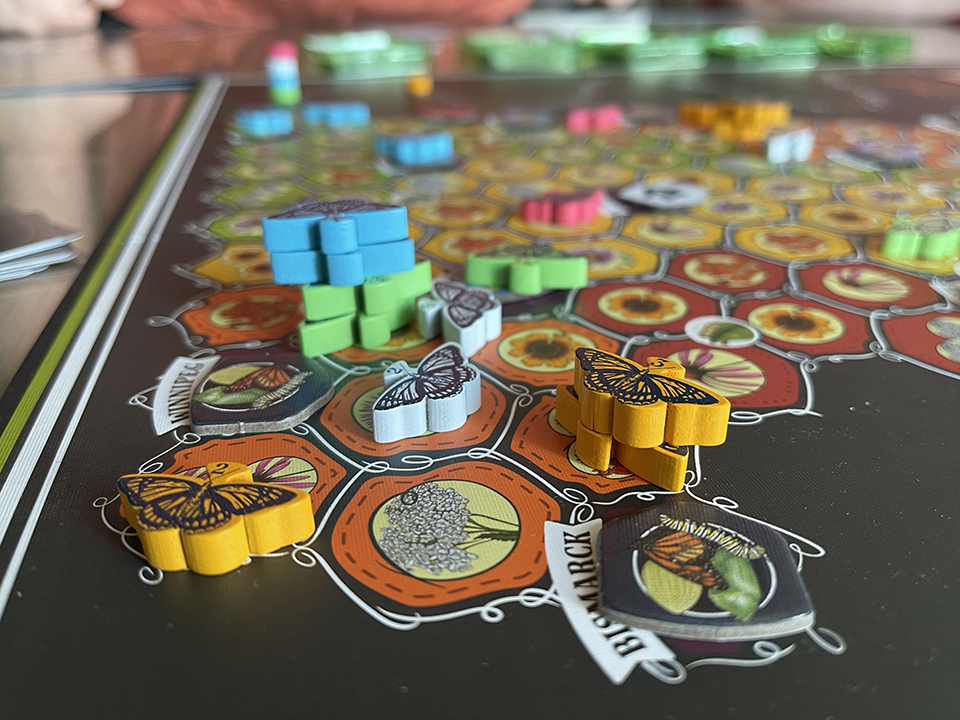
Hatching new butterflies
You want to try to hatch as many new butterflies as possible.
To hatch a new butterfly, land in a spot next to a milkweed icon. That butterfly can then immediately hatch a next-generation butterfly.
Generation 1 hatches generation 2, generation 2 hatches generation 3, and so on.
Simply add the next-generation butterfly marker on the same space. To pay its cost, discard the number of flower tokens required.

Hatching costs for your new butterflies
Respectively, generation 2, 3 and 4 butterflies cost:
- two matching tokens or three of any kind
- three matching tokens of four of any kind
- four matching tokens of 5 of any kind
Generation 4 butterflies can flip over to become double butterflies. The cost is 4 matching tokens or 5 of any kind.
Double butterflies count as two toward goals but have the advantage of moving as one.
Remember, you may still collect the flower token or waystation cards before you reproduce.
When you hatch a new butterfly, always take the new butterfly marker from the season goal cards from set up before you take any from your supply.
If you remove the last butterfly from a season goal card, flip over to the next season and reveal the next goal.

Waystation cards
There are tokens on the board that you can land on called waystation cards. These are on the markers of by U.S. cities.
If the station is facedown, and you are the first person to land there, flip over the token and collect the item shown.
Then, roll the flower dice and take the token of the flower that you rolled.
Waystation cards will usually give you a lifecycle card (seen below). Collecting a set of all four life cycle cards can give you bonus points or bonus abilities.
Leave the waystation marker face up the rest of the game. Other players may still collect the item but will not roll the flower dice.
Note: You can never have a second copy of any waystation card (life cycle card or bonus move card).

Life cycle sets
As I mentioned, most of the waystation tokens will give you a life cycle card. At the end of the game, each life cycle card collected is worth one point.
There are four cards in each set of cards. If you collect all four life cycle cards of one color, you get an extra benefit that is shown next to the waystation board.
Changing seasons
When all players have had four turns, the spring changes to summer.
Score seasonal goals for each player. If a player has no generation 2 butterflies on the map, they may hatch one for free. It goes on top of the generation 1 butterfly.
All generation 1 butterflies are removed and the summer card is revealed (if if has not been already). The person with the fewest points gets to go first in summer.
Everyone has five turns in summer. Then, score summer goals.
The person with the fewest points is the first player for fall. If a player has no generation 3 butterflies, they may hatch one for free. Generation 2 butterflies are removed from the board.
Finally, fall has six turns. Again, score the fall goal card and add final game points.
Only generation 4 butterflies that have made it back to Mexico count for points at the end of fall.

How to score points
Seasonal goal points are scored at the end of each season.
At the end of fall, score points for the number of generation 4 butterflies in Michoacán.
Then, score one point for each life cycle card you collected.
Note that if you see a point scoring symbol (a number in a circle) with an exclamation point, that point is scored immediately.
How many people can play Mariposas?
Mariposas plays 2-5 players and is recommended for ages 14 and up.
It’s a nice game to play with a smaller group of people, in my opinion.
The game is not very interactive, so if you have too many people, it can be unengaging between turns.
Read Also: These are the best 2 player cooperative board games
Strategy tips for Mariposa
There are different strategies to play, but I think the most points to be had is getting your butterfly family back to Mexico.
Definitely prioritize getting double butterflies in the last season. The added benefit of moving as one will make a big difference in your point structure.
Also, take advantage of trading in action cards if you have too many of one kind.
My husband complained throughout the game that he kept getting the same action card, only to realize afterward that he could have traded one or both in since he had duplicates. (Oops).
The life cycle cards can also help you gain resources and points, so be sure to take advantage.
Remember, the game has a “push your luck” element, so try not to get too far north if you’re trying to go for some of the seasonal goals.
Your max point value will be getting your butterflies back to Mexico at the end of the game. However, I’m definitely excited to play again and try new strategies.
Have you played Mariposas? Do you think it is a great game or just okay? Let me know in the comments below.

